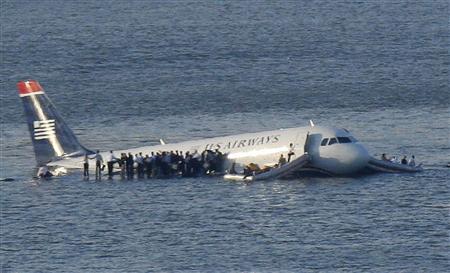Airlines spend serious money to convince consumers flying is safe. Not only is flying safe, they insist, but it is way more safe than driving.

Why is it, then — every time some folks board planes, settle into the seat, place the tray-table up and the seat-back in the upright position, hear the engines ignite and roar, and feel the pull of the plane against their backs — hands begin to sweat, the heart pounds, guts squirm, and minds start screaming helpless, desperate questions: What if they’re wrong? What if I die? Why didn’t I take the car?
If anyone is like me, they enter a car to go somewhere five or six times a day. In other words, people participate in driving events thousands of times a year. Is it really possible that boarding a plane thousands of times a year is safer than driving? Many humans would die from heart attacks alone, if they did such a thing.
Even if anyone has two or three car accidents per year, it is unlikely that someone will die. In fact, stats reveal that one auto-related death occurs per 100 million driving miles. It amounts to 3.4 million hours of driving.
It’s equivalent to one driver navigating their vehicle 390 years continuously — 24/7 — without a break. Does anyone believe an airplane of any kind at all can fly that many years accident-free? When it crashes, hundreds of passengers die. It’s not so hard to figure out.
When airplanes, helicopters, and jets crash, it is unlikely anyone will survive. An aircraft must fly perfectly or people die, more times than not.
Not so with cars.

It’s probably un-helpful to spout a bunch of numbers and ratios and statistics to prove the obvious. People in panic-mode don’t do well with numbers, anyway.
But let me make this observation: smart people in the airline industry are serving up a mess of misleading statistics to get the flying public to underestimate the risks of boarding an airplane.
Guess what? Airlines perform this charade to separate the traveling public from its money. Is anyone surprised?
The only way flying will ever be safer than driving is if folks fly as few times a year as possible. All the favorable statistics airlines like to quote rest on this simple premise: If people fly less, they are less likely to die.
People get into planes fewer times than into cars. Therefore flying is safer than driving. Cogito ergo sum. Quod erat demonstrandum.

Remembering the Space Shuttle program may bring the point into sharper focus. As the public knows now, the government discontinued the space-shuttle after observers pointed out that it was unreasonably dangerous to the astronauts.
At first the program seemed safe. Then an accident took a dozen lives. Afterward, it was safe again. Then another accident. More deaths.
Soon it became obvious. Every thirty flights the program was going to lose an entire crew. A way to improve the odds couldn’t be found. The program was scrapped.
The government threw up its hands and said: Let private companies handle the space program. Look at the great job they are doing for the airlines.
Billy Lee


Thanks. I’m really glad I read this; most helpful.